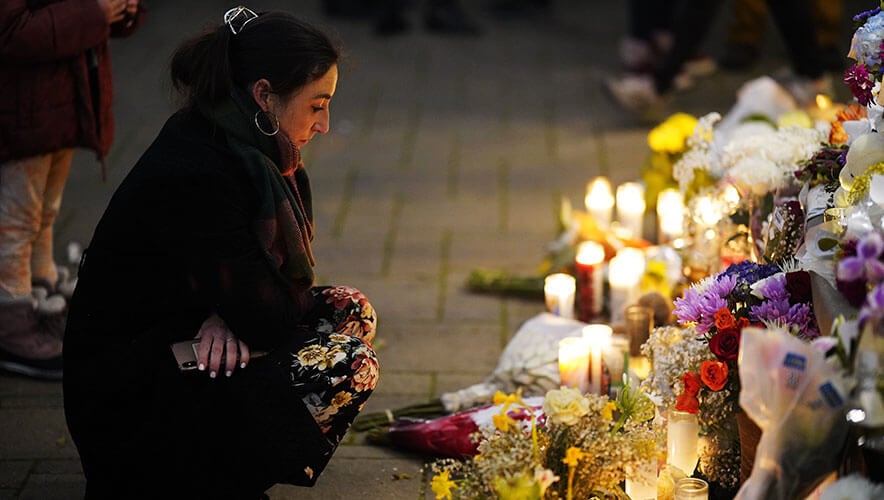Despite Red Flags, Alerts, and Reporting, U.S. Mass Shooters Evade Early Intervention
At least seven out of 2023’s 10 deadliest mass killings in the United States were carried out by attackers who exhibited some form of concerning behavior in the months or years prior to their attacks, according to analysis by The Washington Post. This includes a variety of warnings about the gunman who attacked a bowling alley and restaurant in Maine, where he killed 18 people.
Mass shooting perpetrators had made previous threats, been violent, alarmed family members, or signaled their intentions online, and in two attacks, there had been previous criminal charges or allegations of abuse, the Post reported.
“Very rarely do we see someone commit a mass shooting where there were no warning signs,” Lisa Geller, a senior adviser at the Johns Hopkins Center for Gun Violence Solutions, told the Post.
In a session on behavioral threat assessment at GSX 2023, Joshua Shelton, CPP, a senior security specialist at FedEx, shared how an organization can generate a new focus on prevention in the hope of diminishing—if not eliminating—the chances of an attack. This plan of action included monitoring for eight key red flags or proximal warning behaviors, including the pathway to violence, fixation, identification, novel aggression, energy burst, leakage, last resort, and direct threat. The ones that pose the greatest level of risk, though, are the pathway, identification, and last resort.
“The last resort indicator is one generated by both a potential attacker and the people that influence his or her life—family, employers, and figures of authority,” according to a session spotlight from the GSX Daily. “Quite simply, when someone senses there is no escape or no other answer, the resulting desperation can increase their risk of harm to others.”
A man who killed five people and wounded eight at a Louisville, Kentucky, bank in April 2023 had been experiencing anxiety attacks, was falling behind on his work, and was frequently absent from his job. Coworkers knew he was struggling, but they hadn’t expected him to buy an AR-15 rifle and attack his workplace, the Post reported. The man’s parents also did not seek police intervention as part of Kentucky’s “red flag” law—a measure in which people who are reported to be potentially dangerous are prevented from possessing firearms—because they said they had no idea he had considered buying a gun.
In Maine, law enforcement received multiple warnings about the eventual gunman before the 25 October attacks, according to the Post and other outlets. His family contacted police with concerns about his mental health and access to guns. Law enforcement officials and governmental agencies expressed anxiety about what risk the man posed to others. A soldier who served with the shooter in the Army reserve sent the local sheriff’s office a letter warning that the man might “snap and commit a mass shooting.”
But no system was in place to enable police to quickly remove his access to guns. The state’s “yellow flag” law has much more strict and complex rules to remove a person’s firearms than a red flag law.
Maine’s law—the only yellow flag law in the United States—was enacted in 2020, and it adds multiple steps to the typical red flag law process. In Maine, someone who suspects a gun owner is a threat can report them to the police, and then law enforcement can decide to take that person into protective custody, order a mental health evaluation from a medical expert, and then—if the doctor and police both deem necessary—apply for a court order to get the individual’s firearms temporarily taken away. Only then can a court order temporarily suspend a gun license or remove guns, CBS News explained.
Under a red flag law, any relative or roommate who suspects a gun owner is an immediate violent threat can apply for an emergency court order, which—if approved by a judge—demands that the gun owner must temporarily surrender their gun license and firearms. The individual can then appeal to get the order lifted.
Where they have been enacted, red flag laws have been successful at preventing potential violence. A 2022 study from the University of California at Davis found that California’s Gun Violence Restraining Order (GVRO) law was used in 58 cases of threatened mass shootings in its first three years, and about 80 percent of GVROs were used in cases of threatened interpersonal violence. Six of the cases involved minors, all of whom targeted schools.
“GVROs were also shown to potentially be effective in preventing self-harm, which was threatened in about 40 percent of the cases,” a news report on the study noted. “No suicides occurred among individuals who were subject to the restraining orders.”
Despite their value, red flag laws are rarely triggered, due to lack of awareness about the laws and resistance by some authorities to enforce them, the Associated Press reported in 2022.











